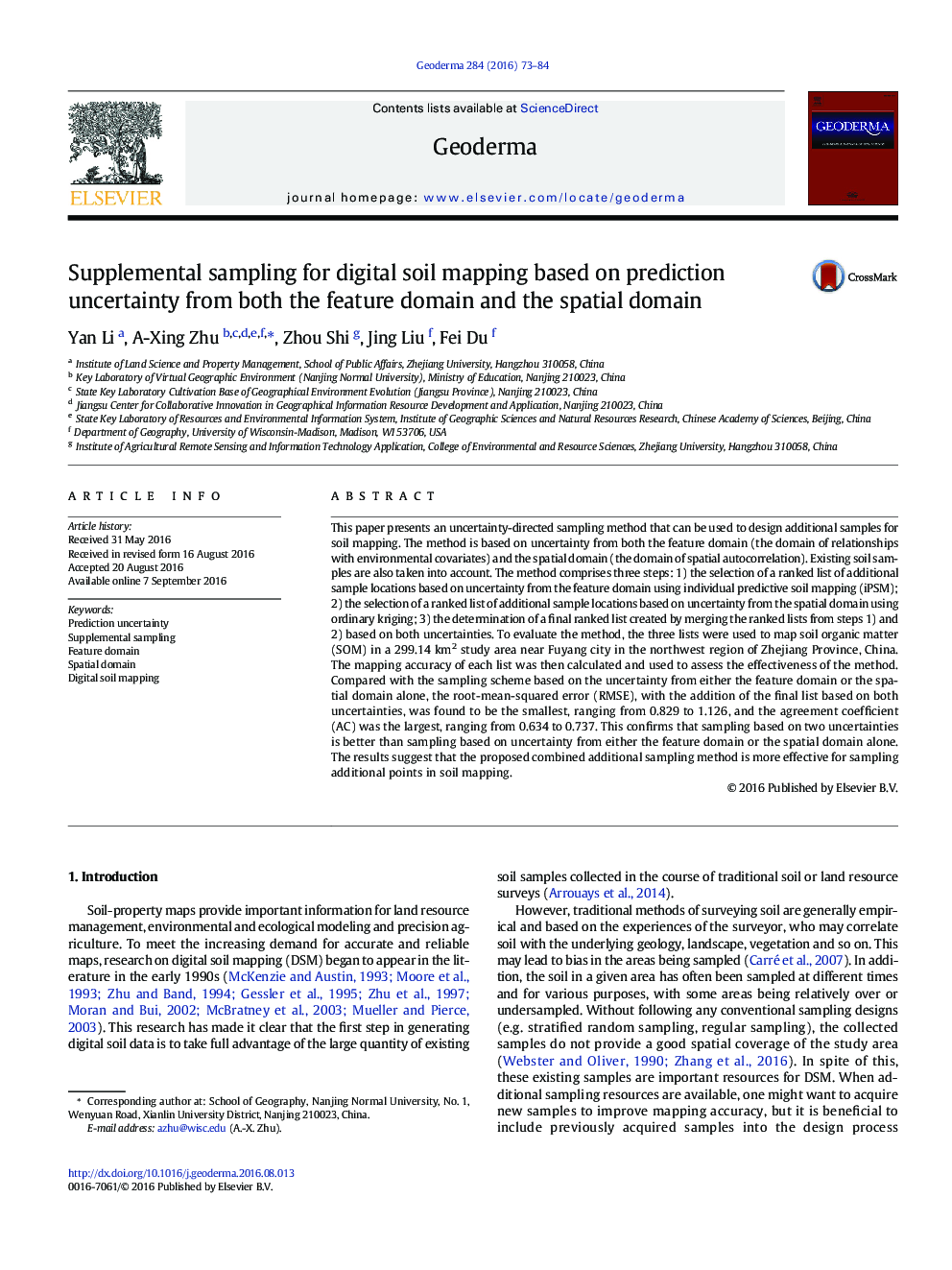| Article ID | Journal | Published Year | Pages | File Type |
|---|---|---|---|---|
| 6408278 | Geoderma | 2016 | 12 Pages |
â¢An uncertainty-directed sampling method was proposed.â¢The method is based on uncertainty from both feature and spatial domains.â¢The method takes existing soil samples into account.â¢The proposed method is more effective for sampling additional points.
This paper presents an uncertainty-directed sampling method that can be used to design additional samples for soil mapping. The method is based on uncertainty from both the feature domain (the domain of relationships with environmental covariates) and the spatial domain (the domain of spatial autocorrelation). Existing soil samples are also taken into account. The method comprises three steps: 1) the selection of a ranked list of additional sample locations based on uncertainty from the feature domain using individual predictive soil mapping (iPSM); 2) the selection of a ranked list of additional sample locations based on uncertainty from the spatial domain using ordinary kriging; 3) the determination of a final ranked list created by merging the ranked lists from steps 1) and 2) based on both uncertainties. To evaluate the method, the three lists were used to map soil organic matter (SOM) in a 299.14Â km2 study area near Fuyang city in the northwest region of Zhejiang Province, China. The mapping accuracy of each list was then calculated and used to assess the effectiveness of the method. Compared with the sampling scheme based on the uncertainty from either the feature domain or the spatial domain alone, the root-mean-squared error (RMSE), with the addition of the final list based on both uncertainties, was found to be the smallest, ranging from 0.829 to 1.126, and the agreement coefficient (AC) was the largest, ranging from 0.634 to 0.737. This confirms that sampling based on two uncertainties is better than sampling based on uncertainty from either the feature domain or the spatial domain alone. The results suggest that the proposed combined additional sampling method is more effective for sampling additional points in soil mapping.
